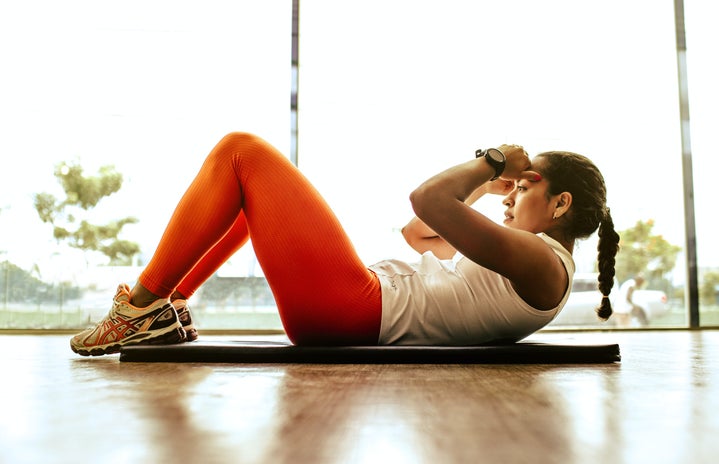Pull-ups are basically the hallmark of fitness testing because you either do one or you don’t—there’s no in-between. The past year, I’ve been focusing on working out and lifting consistently more, and as my fitness journey progressed I would get more and more frustrated at my inability to even do one. I would hang on the bar for minutes, struggling to move one inch without much success. It sucked. I passed other benchmarks, like a 200 lb squat and deadlift eventually, but I was still unable to do a pull-up. I developed blisters from trying.
Women inherently have more difficulty doing pull-ups. This is because of several reasons. First, women naturally carry a higher percentage of body fat and a lower percentage of skeletal muscle due to the presence of estrogen. This means we have less of the muscle we need to pull ourselves up, and more weight weighing us down. Additionally, fat and muscle tend to be distributed around the hips, and women tend to naturally pack on upper body muscle without targeted training. Women also are geared to have a higher endurance level than men but are less able to rapidly fire muscle fibers due to the type of muscle fiber we have more of. Slow and steady doesn’t win the pull-up race, unfortunately.
I’ve always liked a challenge, so I intentionally switched gears in my workouts to help me achieve my first pull up. First, I moved from having three lower-body days, one full-body day, and two upper-body days in a week to having three upper body/back days, one full-body day, and only two lower-body days. I focused on five particular movements on upper body days to help me learn the movement of a pull-up and gain the strength necessary to do one:
1. Assisted pull-ups
Using an assisted machine or a resistance band, I learned the motion of a pull-up and was able to up my reps. Over time, I decreased the assistance on the machine and reduced the resistance of the bands I was using.
2. Lat pull-downs
Usually doing heavy 4 sets of 8 reps lat pull-downs, I tried my best to fatigue the lat muscle as completely as possible and to bulk my last up. Lat pull-downs engage the exact muscles used in a pull-up, so they are essential to help you train your muscles.
3. Shoulder pull-ups
Just hanging on the bar and shrugging your shoulders as many times as you can help you build muscle you need to begin pulling up. This movement also allows you to build your grip strength so that you are able to hang on to the bar long enough to do as many reps as you need.
4. Incline rows
Doing heavy incline rows, like lat pull-downs, targets the muscles you need to do a pull-up. Including them allowed me to bulk up.
5. Cardio
I’m not a big fan of cuts and cardio, like most people out there, but fitting in more cardio allowed me to cut off some fat so that doing the actual pull up was a bit easier. Even losing 5 pounds of fat (while building muscle) can help your body, as that’s 5 pounds less your muscles have to move up.
I watched countless YouTube tutorials, got advice from friends, and practiced over and over. It took about three months, which was frustrating, as many of my male friends were able to do one on their first try!!! But finally, surprisingly, I did my first one out of the blue! Next goal: two pull-ups in a row!


